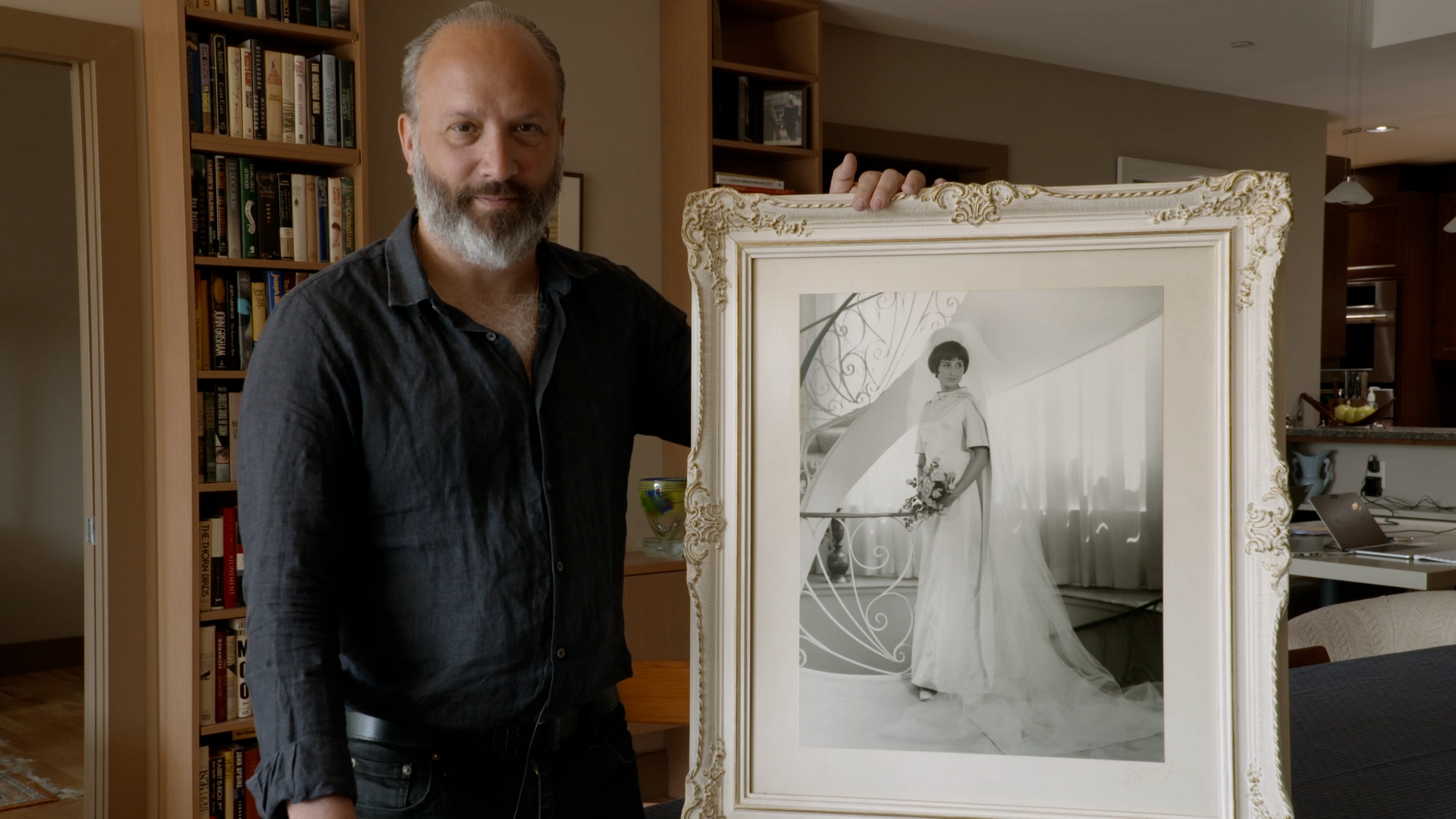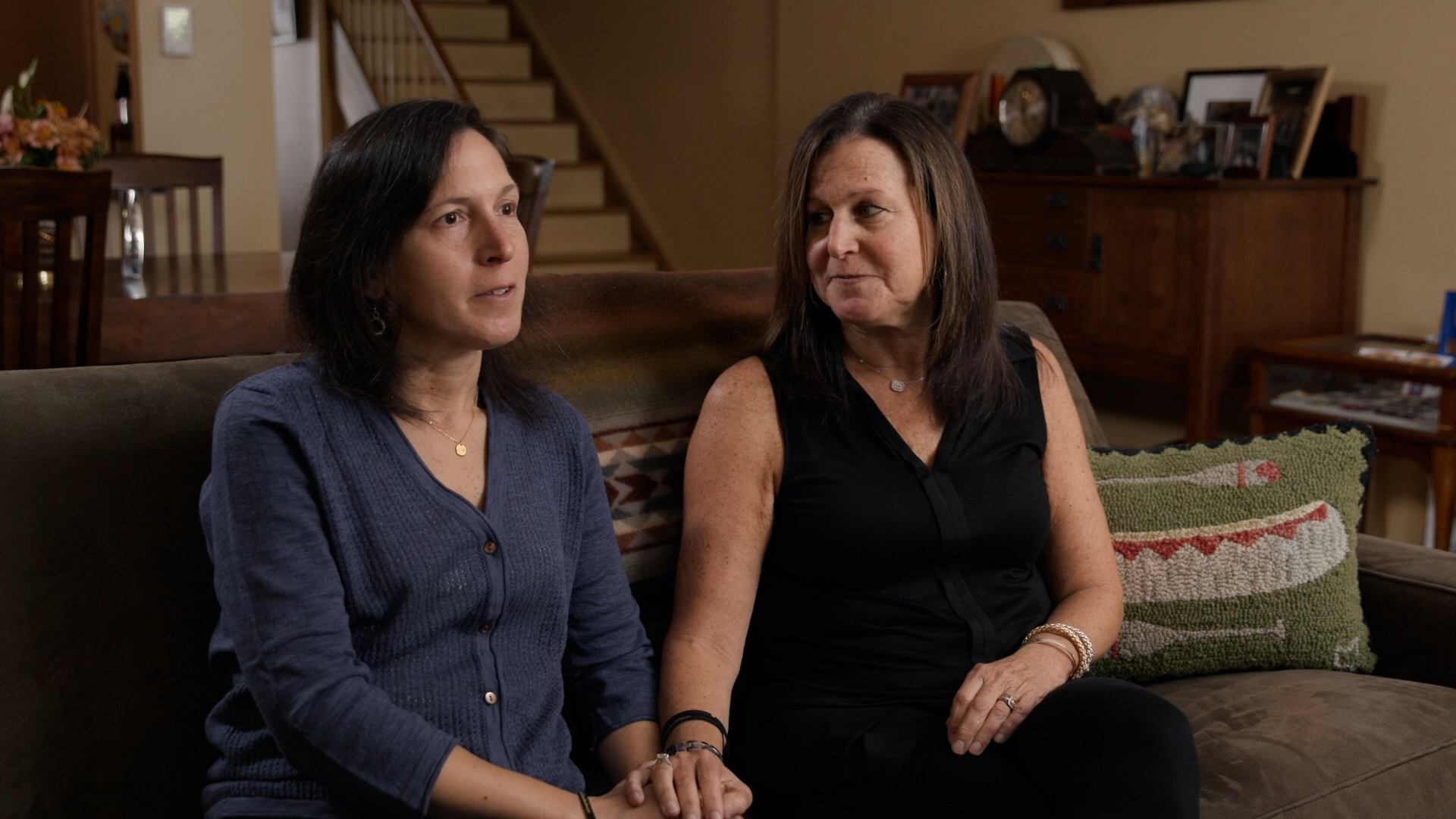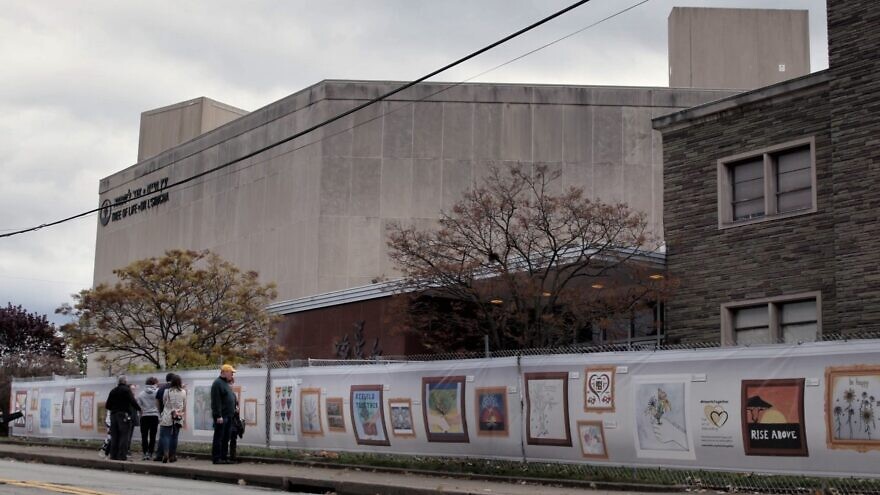SWAT teams rushing to a synagogue to save people from a shooting?
That was something most people thought they’d never see. But that’s what happened at the Tree of Life*Or L’Simcha Synagogue when Gregory Bowers opened fire on Oct. 27, 2018 in the Squirrel Hill neighborhood of Pittsburgh, killing 11 Jews, most of them seniors, while they sat in Saturday-morning services in what has been the deadliest attack on Jews in American history.
In “A Tree of Life,” to premiere at DOC NYC at Manhattan’s SVA Theater on Nov. 14, director Trish Adlesic mostly does a great job at providing balance in this powerful film, and nearly every choice is the right one.
Bowers isn’t mentioned until 30 minutes in and gets almost no screen time. Adlesic lets CNN’s Brian Stelter do some of the talking using a clip the network aired. In “Emanuel,” a documentary about the 2015 shooting and murder of nine African-American church-goers at Emanuel African Methodist Episcopal Church in Charleston, S.C., we don’t see the convicted killer Dylan Roof until 25 minutes in. He is shown shooting at targets in his backyard and chillingly entering the church in footage caught on security video cameras. If similar footage exists of Bowers, it’s not pictured here.
The film points out that the shooter likely targeted the synagogue because of its programs for the Hebrew Immigrant Aid Society (it was listed online as one of many synagogues to have a HIAS Shabbat), but should have made more clear that the accused murderer was not a fan of Trump. It is chilling to hear police chatter, especially when an officer reports that the shooter said “all these Jews need to die” just as we then see the Tree of Life Synagogue building is shown.

Adlesic makes great use of survivor Joe Charny, who is the most magnetic figure in the film. Whether the Squirrel Hill resident is talking about how people need to laugh in life, when he checks the score of the Pittsburgh Steelers game, or in his best moment, sings the Hebrew words of the prayer Etz Chayim Hi—“It is a Tree of Life” (… “to all who hold fast to it”), although his siddur is probably a prop since he must know it by heart) as shots of a casket of a victim are depicted being loaded into a hearse that drives away, he is always memorable. Charny somehow seems like he could be everyone’s grandfather you want to hug and looks like he could not hurt a fly.
The film, which boasts Mark Cuban and Michael Keaton as executive producers, is emotionally gripping as the survivors tell their story and viewers learn about those whose lives were tragically and brutally taken. A monthly junior congregation service thankfully was not scheduled for that day or young children would have been in harm’s way.
‘The end of my life coming’
When she heard the commotion, Andrea Wedner was in the back of the synagogue with her mother, Rose Mallinger, and told her to get down. She survived, but it would be too late for her mother, at 97, the oldest of the victims. Survivor Stephen Weiss speaks about seeing shell casings by the doorway. Survivor Dan Leger tells of how he and Dr. Jerry Rabinowitz moved towards the gunfire, thinking that they might be needed to help the wounded, as Leger is a nurse. Both would be shot; Rabinowitz, who was 66, would be killed. (A scene of a memorial instantly brought tears.)
To balance the tension, Adlesic smartly includes heartwarming family stories not directly related to the shooting, as survivor Barry Werber talks about at his family’s Passover seder, when children would sample the wine, and how his zayde (grandfather) would skip pages in the Haggadah because he knew the kids needed to go to sleep or his bubbe (grandmother) would alert him that he missed a page. There is a scene of challah-making during which we hear that the neighborhood of Squirrel Hill, at 40 percent Jewish, is viewed as the place to get kosher food.
In an ironic twist, Magali Fienberg, the daughter-in-law of 75-year-old Joyce Fienberg, recounts how her mother-in-law would have liked her to move from France to Pittsburgh to get away from anti-Semitic problems that were taking place there. Joyce Fienberg was killed in the shooting.
Leger is strangely calm when he recalls getting shot and says he figured he would be dead in a few minutes.
“I had no sense of being afraid about the end of my life coming,” he says. “I thought about my life, and I thought, ‘Gee, I’ve had a wonderful life … ’ ”
A few moments later, he heard something.
“This one’s alive,” a paramedic said.
Werber describes being near to Mel Wax, who pushed a door open. He then heard three gunshots; Wax, who was 88, was killed. Carol Black hid in darkness as she saw the murderer’s shadow. Werber knew he had to be quiet as a 911 operator was asking him questions. He could barely breathe.
One of the most jarring scenes if when Magali Fienberg says her son, who was 9, asked her a tough question after hearing his grandmother was shot to death.
“Do you think someone can come and kill us?” she recalls him asking.
“Yes,” she says was her reply, as her face shows more pain than anyone else in the film.
(I’m not sure if that was the best response, but it’s an honest answer that I’m hoping was followed by clarification and context.)
The survivors praised the first responders. Officers Daniel Mead, Michael Smidga, Anthony Burke and Timothy Matson were wounded during the attack by bullets fired or broken glass.
A horrific tweet by Bowers—“HIAS likes to bring in invaders that kill our people. I can’t sit by and watch my people get slaughtered. Screw your optics, I’m going in”—is shown on the screen.

‘Executing him is too easy’
As for Rabbi Jeffrey Myers, it was not his first brush with anti-Semitism. In his younger days, he recounts when someone drew swastikas on his driveway and wrote “Jeffrey is a dirty Jew.” He could not have known many decades later, an attack would come in the form of a man who would bring death to his house of worship, though but he acknowledged that he felt such an attack was inevitable.
Adlesic includes two little-known facts that offer a positive boost. One is that life-long Pennsylvania resident and community activist Wasi Mohamed of the Pittsburgh Foundation worked with the Islamic Center of Pittsburgh to raise more than $338,000 to pay for the costs of funerals and medical expenses for those murdered or injured. The other is that Chabad of Pittsburgh asked people to do 100 mitzvot, or good deeds, for each person who was killed.
The one questionable decision is the inclusion of an absurd anti-Semitic video showing footage of the Jan. 6 attack on the U.S. Capitol in Washington, D.C., as a woman’s voice sings “Jew lies bloody Jew lies,” to the tune of U2’s “Sunday Bloody Sunday.” Another line says Jewish actors were the ones who stormed the Capitol and entered illegally. Not even someone on hallucinogenic mushrooms would believe that; the inclusion does not belong in a film of this caliber.
Michele Rosenthal speaks of her brothers, Cecil and David Rosenthal, both who had learning disabilities and both murdered in the attack. A clip shows Cecil holding a Torah on the bimah and David standing nearby. She says her brothers, aged 54 and 59, knew the Shabbat prayer service by heart because they went to synagogue every week.
“I don’t know two people who were happier living the life that they had,” she says.
Strangely there is little expression of anger for the shooter, though Carol Black, whose brother Richard Gottfried, 65, was murdered in the attack, made her thoughts clear.
“Executing him is too easy, and I don’t want him to have it easy,” Black says of Bowers, whose name she would not utter because she doesn’t want to humanize him.
Another man supports the death penalty while Leger, who does not believe in it, quizzically says he wants the opportunity to speak to the shooter and ask why he did it.
Sylvan and Bernice Simon, 86 and 84, Daniel Stein, 71, and Irving Younger, 69, were also murdered by the shooter in the attack. Bowers, who pleaded not guilty, is expected to have his trial in 2022.
While we wish a film like this never had to be made, it is a must-see and a fitting tribute to those violently ripped from their families. Stronger music could have been used in the documentary, but it still packs an emotional wallop. This film is worthy of an award, and however painful it may be to watch, burying one’s head in the sand, especially as anti-Semitic incidents rise throughout the country, will not keep one safe.
Ellen Surloff, president of Dor Hadash Congregation, which shared the space along with New Light Congregation and Tree of Life*Or L’Simcha, provides a sad but obvious conclusion: “The days when synagogues just leave their doors open and hope that, you know, no one comes through the door with a gun … I think those days are gone.”
The world premiere screening at 11:15 a.m. on Sunday, Nov. 14, will feature the filmmakers and survivors in a Q&A after the film, as will the Wednesday screening at Cinépolis Chelsea, 260 W. 23rd St. in New York City, which begins at 4:15 p.m.


























